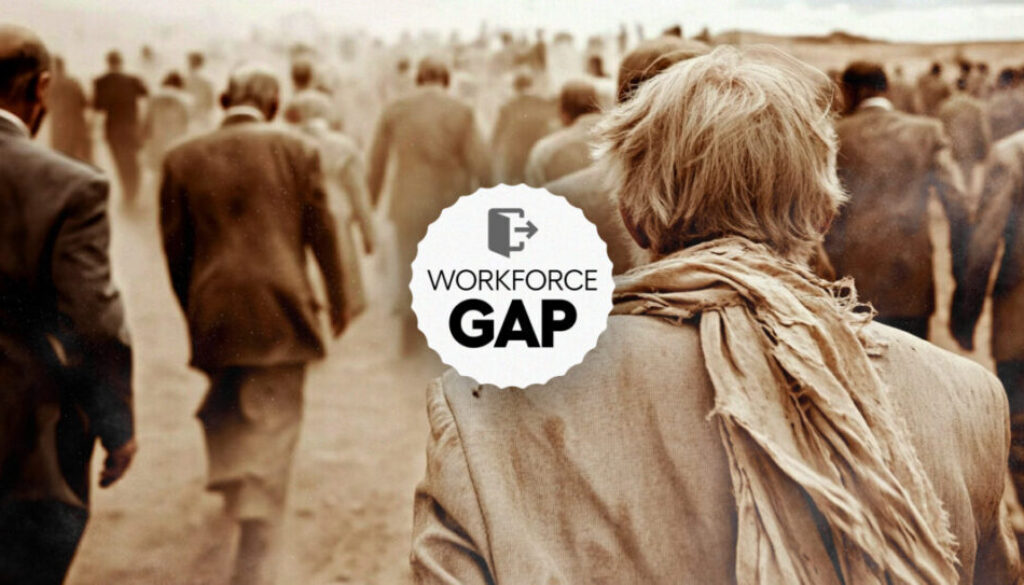Insurance industry retirement exodus creating a talent gap

The insurance industry is no longer just grappling with a looming talent gap—it is knee-deep in it. With hundreds of thousands of experienced professionals heading toward retirement and too few newcomers to take their place, underwriting and other critical functions risk a brain drain that could compromise performance, innovation, and growth.
At a recent online seminar hosted by SEND and moderated by 5189 Limited CEO Tony Tarquini, a panel of industry veterans painted a stark picture of the workforce gap, especially in underwriting, while offering hopeful strategies for attracting and developing the next generation of insurance professionals.
The talent gap crisis is ‘already here’
“In the U.S. alone, 400,000 people in the insurance profession are expected to leave by 2026. That’s not a looming crisis—it’s a crisis that’s already here,” Tarquini said. “And it’s compounded by the fact that few young people grow up aspiring to enter the industry. Most fall into it by accident. That’s just not good enough anymore.”
Rose Hall, former innovation leader at AXA XL and now head of RH Business Ventures, said the U.S. is beginning to build academic pipelines that did not exist when she started her career as an engineer.
“There are risk management and insurance programs popping up at universities like UNC Chapel Hill, which gives me hope,” Hall said. “But we’ve still got to make insurance sexy again—flip the narrative and position it as the tech-enabled, dynamic business it actually is.”
That reframing is especially urgent as the demographic squeeze tightens. In London, more than a quarter of underwriters are now over 50, said Suzanne Bray, Head of Talent & Growth at Convex. “Following Covid, a lot of experienced professionals left the workforce, and at the same time, internship and grad programs were frozen. So, we’ve had a talent gap at both ends.”
Knowledge transfer in peril
It is not just about recruitment; it is about knowledge transfer. As Bray described it, there is a “generational handshake” that must occur—veteran underwriters need to consciously pass along their hard-earned knowledge, much of which is now subconscious after years in the business.
Convex recently partnered with a behavioral scientist to study what experienced underwriters actually do when preparing for meetings. What they thought were five steps turned out to be 15 nuanced processes.
“That kind of insight can be transformational when passed to younger underwriters,” Bray said.
But what skills does the next generation need?
With artificial intelligence rapidly reshaping the insurance landscape, both Bray and Hall emphasized the need to prioritize human-centric capabilities.
“It’s less about technical processing and more about relationships, leadership, and critical reasoning,” Bray said. “Digital literacy and AI fluency are table stakes now. What matters is how professionals engage, listen, and advise clients.”
Gen Z: The first AI-native generation
Hall agreed, pointing to Gen Z’s unique profile as the first AI-native generation.
“They don’t want to spend time doing repetitive entry-level tasks AI can handle. They’re asking: ‘What higher-order work can I do?’ That’s a challenge and an opportunity for us as leaders,” she said. “We need to build their leadership skills early and not underestimate their capacity.”
Still, Hall cautioned, today’s leadership often struggles to understand and support that transformation.
“Gen X and Boomers are learning AI while Gen Z was born into it,” she said. “That makes reverse mentoring vital—we have to let them teach us, too.”
The talent crisis is also being shaped by the ambiguous nature of retirement. Some older leaders are not exiting when expected, creating a bottleneck. Others are trying to phase out gracefully while passing down their legacy.
“There’s a risk of fragmented business planning,” Hall said. “You’ve got people designing two-year transition plans, then extending them another year. Meanwhile, the next layer of leaders is ready to rise—but the space hasn’t opened up.”
A different solution
One solution being tested successfully is hiring mid-career professionals from outside the insurance world. At Convex, Bray said returner programs have helped bring in skilled professionals—some from Goldman Sachs—into underwriting roles. “They already have client management and analytical skills. All we have to do is teach them the technical insurance piece,” she said.
Beyond new hiring tactics, Bray said the industry needs a better value proposition for younger workers in order to address the talent gap.
“They’re not attracted to Monday through Friday, 9-to-5. They want flexibility, autonomy, and meaning,” she said. “If we don’t offer that, they’ll look elsewhere.”
Changing perceptions of the industry may be the biggest hurdle.
Tarquini recalled the response of his son, who said he would “rather stick needles in his eyes” than work in insurance—only to find himself years later leading distribution at a tier-one insurer in Asia and loving the job.
“What we do is creative, intellectually demanding, and purpose-driven,” Hall said. “We just need to stop being apologetic about it. I used to tell people at cocktail parties I work in insurance and watch them walk away. Now, I say I help a legacy industry go cutting-edge, and they want to know more.”
In an age where insurance covers everything from cyberattacks to celebrities’ body parts, Bray said, the storytelling needs to get better. “We insure footballers’ legs, we negotiate with Russian hackers. This isn’t boring. We’ve just got to say it out loud.”
© Entire contents copyright 2025 by InsuranceNewsNet.com Inc. All rights reserved. No part of this article may be reprinted without the expressed written consent from InsuranceNewsNet.com.
The post Insurance industry retirement exodus creating a talent gap appeared first on Insurance News | InsuranceNewsNet.





